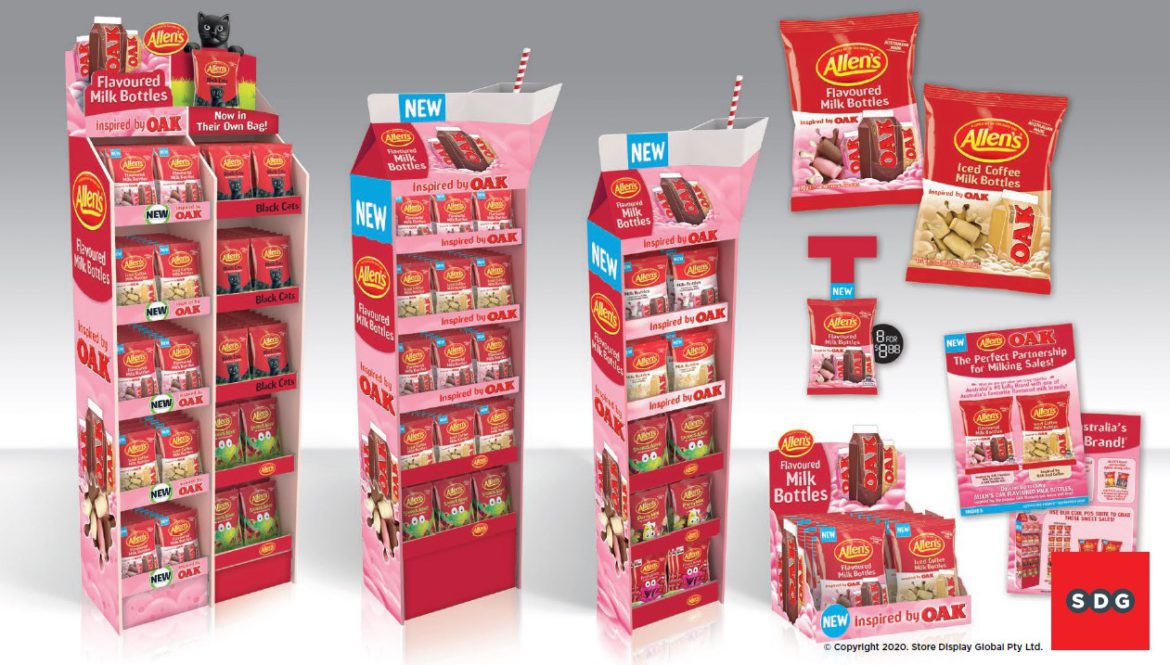- An imaginative retail display is a cost-effective way to enhance customers’ purchase behaviour, increase product sales and return on investment.
- Imaginative displays work as they increase customer arousal and infer product benefits, which influence their purchase behaviour. The displays need to be consistent with the product nature to have a positive impact.
- The study, in the prestigious and influential Journal of Marketing, involved researchers from Monash University, Queensland University of Technology and Capital University of Economics and Business (China)
Have you stood back to admire the creative, ‘gimmicky’ and attractive product displays in retail stores? A new international study has found that these displays subtly awaken customer senses and increase purchase behaviour.
Researchers from Monash University, Queensland University of Technology and Capital University of Economics and Business (China) found that for a wide range of consumer products – from bathroom tissues and toothpaste to soft drinks and confectionery – creative product displays positively influence customer behaviour.
Imaginative displays are constructed using multiple units of the same product in a novel and aesthetically appealing form. They can be found in supermarkets or retail stores to entice customers to purchase a certain product.
This new research paper, published in the prestigious Journal of Marketing – published by the American Marketing Association – examined the effect of imaginative product displays on customers’ purchase behaviour with more than 1,500 participants from Australia, the United Kingdom and the United States.
Professor Hean Tat Keh (Monash Business School), Dr Di Wang (Queensland University of Technology) and Dr Li Yan (Capital University of Economics and Business) identified that these imaginative product displays triggered affect-based arousal and cognition-based inferred benefits in customers.
This means the imaginative display arouses customers’ interest, along with inference of product benefits which increase their purchase intention for the product on display.
As part of the broader research project, results from six studies showed that, relative to basic and standard product displays, imaginative displays in retail stores can increase customers’ purchase intention, actual purchases, product sales, and return on investment.
“However, these displays cannot just be creative for the sake of being creative. They need to be relevant to the product and capture the imagination of shoppers,” Professor Keh said.
“Besides arousal, our research revealed a cognition-based process whereby imaginative themed displays, with particular shapes mimicking actual objects such as a bear and a battle tank, conveyed embodied meanings, such as strength and energy, that transfer to the products constituting the display, which increase customers’ purchase intention.”
Key findings from the research include:
- A 53 per cent increase in return on investment from the sale of tissue boxes between the imaginative and standard promotional displays in a grocery store.
- Customers exposed to the imaginative product display were 48 per cent more likely to purchase chocolates than those who saw a standard display at a confectionary store.
- Shoppers were more likely to buy more toothpaste if the display was creative and attractive than a standard display.
- Energy drinks in a display shaped like a tank increased customers’ purchase intention due to the positive effects of arousal and inferred product benefits.
“Our findings not only explain why some retailers use ‘gimmicky’ imaginative displays but also provide evidence on the processes and boundary conditions of these displays to favourably influence customers’ purchase behaviour and increase sales at relatively low costs,” Professor Keh said.
Professor Hean Tat Keh (Monash Business School), Dr Di Wang (Queensland University of Technology) and Dr Li Yan (Capital University of Economics and Business) produced the study titled ‘Gimmicky or Effective? The Effects of Imaginative Displays on Customer Purchase Behaviour’, forthcoming in the Journal of Marketing. (Both Dr Di Wang and Dr Li Yan obtained their PhDs from the Monash Business School.)
Please visit https://doi.org/10.1177/0022242921997359 for more information.
